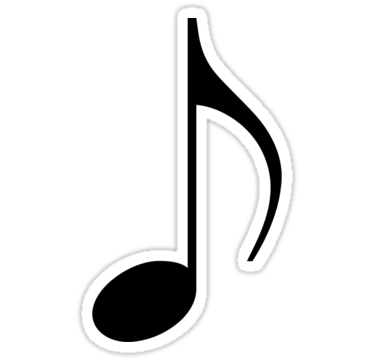

), for instance, there are al- together 1760 possible notes. If we limit each key to have 20 possible time values (e.g., brieve, semi-brieve, dotted minum, minum, dotted crochet, crochet, dotted quaver, quaver, dotted semi-quaver, semi-quaver, dotted demisemi-quaver, demisemi-quaver, etc. For example, a crotchet of the middle C is considered as a note, and a quaver of the same middle C is a dif- ferent note. A musical note is defined by its pitch and time value. Such networks are termed scalefree networks. Recent research has provided concrete evidence that networks with man-made couplings and/or human connections follow power-law distributions, i.e., log( p ( k )) vs log( k ) being a straight line whose gradient is the characteristic exponent –. This distribution tells us about how this network of musical notes are connected. Basically, the probability of a node having a degree k is p ( k ), and if we plot p ( k ) against k, we get a distribution function. This concept can be mathematically presented in terms of probability density function. The key concept here is the distribution of k.

So, we have an average degree for the whole network. The number of links emerging from and converging at a node is called the “degree” of that node, usually denoted by k. If we consider a network of musical notes, then the nodes will be the individual musical notes and a link between two nodes denotes that the two musical notes are neighbors in the score. A network is usually defined as a collection of “nodes” connected by “links” or “edges”. As an interim approach, some rudimentary rules may be incorporated when selecting compositions. Of course, we do not know exactly how the brain does that. In composing a music, from a system’s viewpoint, our human brain would have automatically performed a processing step that allows only compositions that satisfy certain network properties to emerge and finally pick the best composi- tion according to the composer’s subjective choice. We basically find that if the same network property is retained, it is possible to compose music artificially and the remaining open problem is the choice of a particular sample from a large number of possible compositions. Our final task in this paper is to make an attempt to create “reasonably good” music from the network that has been formed from given compositions such as those of Bach and Mozart. Our results demonstrate, quite surprisingly, that di ff erent music types actually share remarkably similar properties. The purpose is to find out if di ff erent music would display uniformity or disparity in terms of network structure. Specifically we treat a piece of music as a com- plex network and to evaluate the properties of the resulting network, such as degree distribution, mean degree, mean distance, clustering coe ffi cient, etc. In particular we analyze a few distinct types of music, including classical music and Chinese pop. To answer this question, our approach is to employ a data-driven transformation to represent a musical score as a com- plex network. One fundamental question of interest is whether these di ff erent music share similar properties, and the implication of this question is whether a common process/rule exists in the human brain that is responsible for composing music. Across cultures, and between individuals, certain musical pieces are consis- tently rated more favorably than others and the mathematical analysis of mu- sical perception has a long history. Scalefree power-law distribution is a remarkable property that has been found across of a variety of connected communities – and is a key to optimal performance of networked systems.
#QUAVER NOTE FREE#
A key finding is that most networks involving man-made couplings and connection of people are naturally connected in a scale- free manner, which means that the number of connections follows a power-law distribution. study of complex networks in physics has aroused a lot of interest across a multitude of application areas. balaclava, Bratislava, carver, cassava, Costa Brava, guava, Java, kava, larva, lava, palaver.A grace note or species of ornament of which the exact interpretation has differed in various periods. a brief record of facts, topics, or thoughts, written down as an aid to memory: I'll make a note in my diary | Robyn arranged her… appoggiatura, appoggiatura (It.). wo… Commonwealth of Independent States and the Baltic Nations, Neva.


 0 kommentar(er)
0 kommentar(er)
